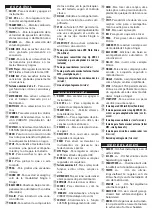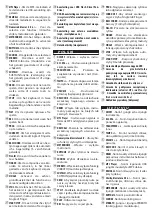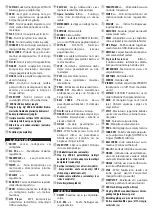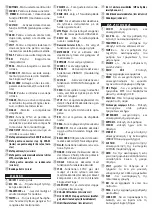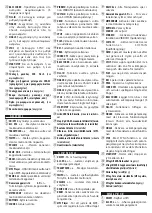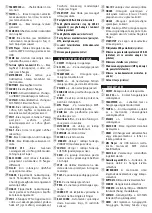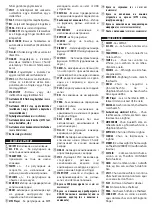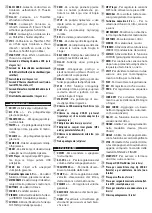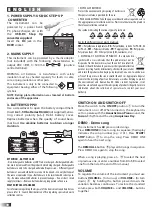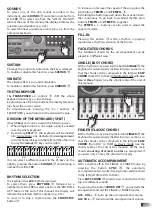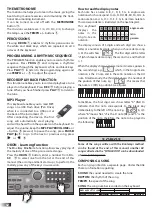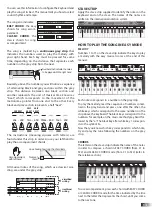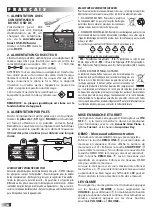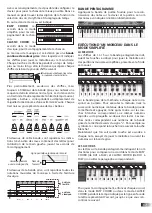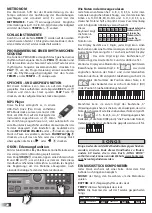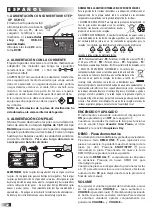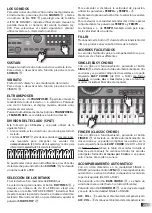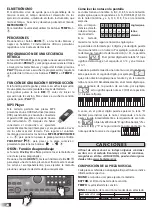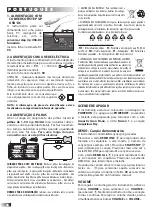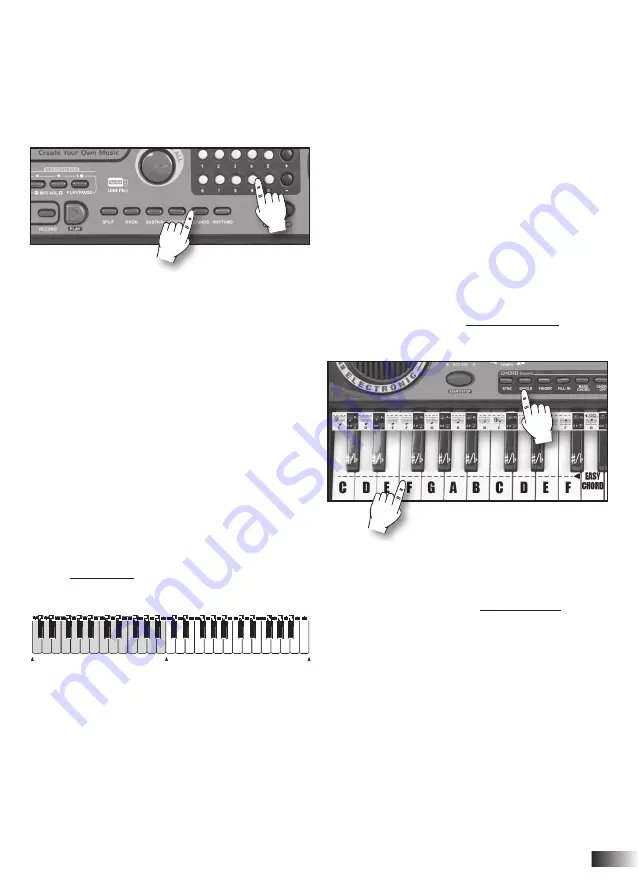
11
SOUNDS
To select one of the 200 sounds recorded in the
instrument, press SOUNDS
⑬
and enter a number from
0 to 199
⑩
to select one from the “LIST OF SOUNDS”
table at the end of this manual; the display indicates the
selected sound number (e.g.: 001).
To select the next or previous sound, press +/– from the
numerical keyboard.
SUSTAIN
Prolongs the sound of a note when the key is released.
To enable or disable this function, press SUSTAIN
⑮
.
VIBRATO
The vibrato effect is a sound modulation.
To enable or disable this function, press VIBRATO
⑭
.
THE TRANSPOSER
The TRAN/– controls
③
shift the whole
keyboard tonality by
+/– 6
semitones.
By pressing one of the two buttons, the display tempora-
rily shows the current value.
By simultaneously pressing the “+/–“ buttons of
TRANSPOSER, you will return to the standard 0 value.
DIVISION OF THE KEYBOARD (SPLIT)
It has
49 keys
and can be used in the following ways:
1. When simply turned on, one single sound is enabled
over the whole keyboard.
2. By entering SPLIT
⑰
, the keyboard will be divided
into two sections: one dedicated to
accompaniment
to form chords (24 keys on the left) and the other one
to play the
melody
(37 keys on the right).
You can select a different sound in the 25 keys on the
right by pressing the button SOUNDS
⑬
and entering a
number from 0 to 199.
RHYTHM SELECTION
The keyboard has 200 rhythms recorded.
To select them, press RHYTHMS
⑫
followed by a
number from
0
to
199
to select one from the “RHYTHMS
LIST” table at the end of this manual; the display will
indicate the selected rhythm number (e.g.: 001).
To start or to stop a rhythm press the START/STOP
button
㉗
.
To increase or decrease the speed of the song press the
two buttons TEMPO + and TEMPO –
④
.
By holding the button pressed down, the variation beco-
mes continuous. To go back to standard rhythm press
buttons TEMPO + and TEMPO – together.
The TEMPO + / – buttons are also used to adjust the
speed of a demo.
FILL-IN
Pressing this button
㉓
while a rhythm is playing,
reproduces a rhythmic variation of the drums.
FACILITATED CHORDS
The facilitated chords for the accompaniment can be
played in 2 different ways:
SINGLE (EASY CHORD)
With a rhythm on, by pressing the button SINGLE
㉕
the
keyboard is automatically divided into two sections, so
that the chords can be composed in the left part EASY
CHORD (from DO1 to FA#2) in facilitated mode with
one
,
two
or
three
fingers (see the chords table at the end of
this manual).
FINGER (CLASSIC CHORD)
With a rhythm on, by pressing the button FINGER
㉔
the
keyboard is automatically divided into two sections, so
that the chords can be composed in the left part EASY
CHORD (from DO1 to FA#2) in classic mode (see the
chords table at the end of this manual). All the main
chords
consisting of at least 3 notes
are recognised; if
you press only 2 notes, the chord will not play.
AUTOMATIC ACCOMPANIMENT
With a rhythm off, in the SINGLE or FINGER mode, by
pressing the button SYNC
㉖
, the automatic
accompaniment starts after having composed the chord
in the left part (from DO1 to FA#2).
Press BASS CHORD
㉒
to add a bass sound to the chord
(up to 5 different sounds).
By pressing the button CHORD OFF
㉑
, you exclude the
arrangement and exit the SINGLE or FINGER modes.
ACC. VOL +
②
t
urns up the accompaniment volume.
ACC VOL –
②
turns down the accompaniment volume.
24
25
C
D
D
E
F
G
G
A
A
B
F
G
G
A
A
B
C
D
D
E
C
C
D
E
A
B
A
B
F
G
D
E
F
G
C
D
G
A
A
B
F
G
D
E
F
G
C
D
G
A
A
B
F
G
D
E
EASY
CHORD
C/1
D/2
E/3
F/4
G/5
A/6
B/7
C/8
D/9
E/10
G/12
A/13
B/14
C/15
F/11
1+
2+
4+
5+
6+
8+
9+
11+
12+
13+



